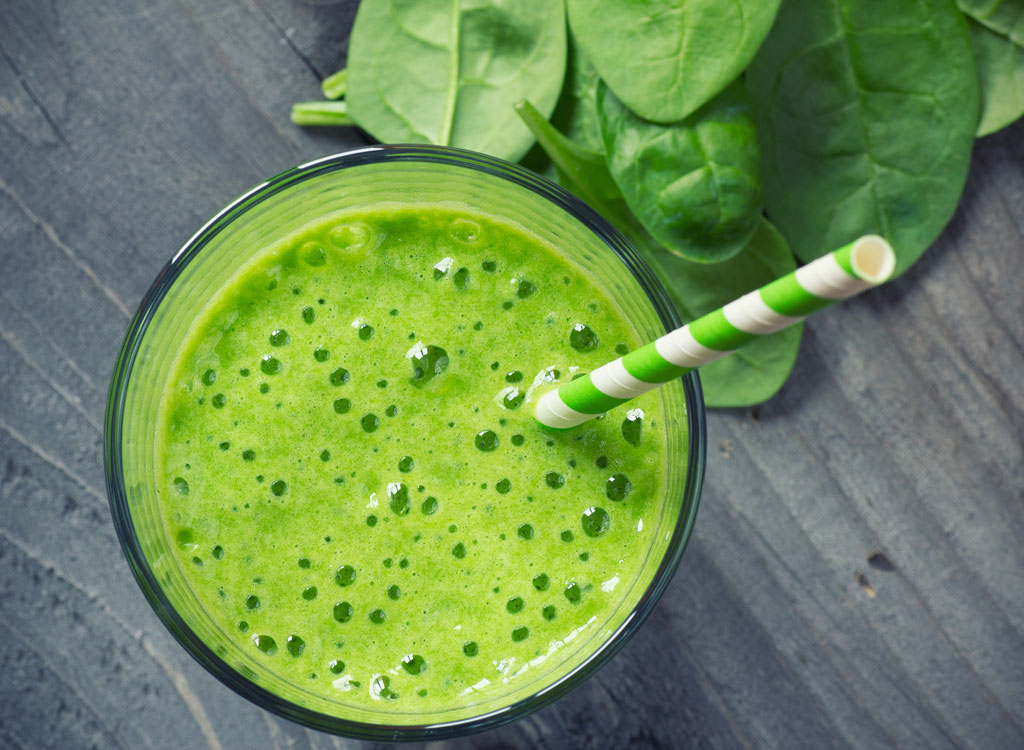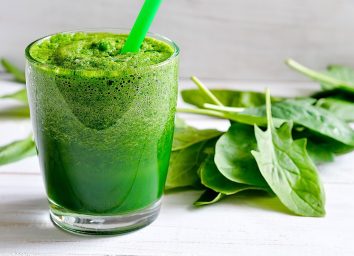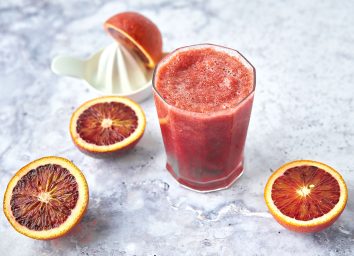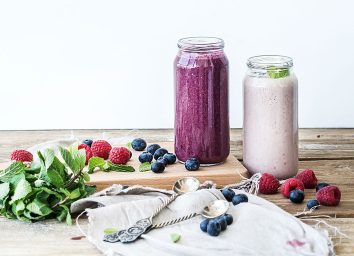Putting Spinach in Your Smoothie May Help Prevent Heart Disease

Everyone knows Popeye credited eating spinach for his superior strength. He often sang, "I'm strong to finich 'cause I eats me spinach." This was because, at the time, Americans believed spinach contained a whopping 35 grams of iron. Well, there is actually only about 3.5 grams in just under a 1/2 cup of cooked spinach—which is roughly 20 percent of the recommended daily intake.
Little did they know though that spinach also contains a wealth of other vitamins and minerals that are instrumental in maintaining good health. One such example is the antioxidant lutein, which makes spinach a heart-healthy food. In a 2017 study, researchers at Linköping University discovered that lutein played a role in lessening inflammation when they looked at immune cells from patients with coronary artery disease. This was a significant finding because many people who live with heart disease endure chronic inflammation, which increases the risk of a heart attack.
A newer 2018 study at Linköping University (conducted by nearly all of the same researchers as the 2017 study) took these findings one step further and found that the best way for the body to absorb the most lutein from spinach was when it was chopped up in a smoothie. Why? Because it was in the presence of the fat from the dairy products in the smoothie (think yogurt or milk).
Now, let's get the lowdown on lutein and learn how you can maximize its heart-healthy benefits.
What is lutein and what foods is it in?
Lutein is classified as both an antioxidant and a carotenoid vitamin. It's a naturally occurring, fat-soluble pigment, and high levels of it are especially prominent in dark leafy green vegetables, such as spinach.
In that previous study from 2017, scientists discovered that lutein can be stored in immune cells, meaning the body can retain it for a long period of time. Researchers then conducted the newer study to see if it was possible to increase levels of lutein in the blood by increasing the intake of it through foods that are naturally rich in the substance.
How did researchers conduct this new study?
For this recent study, researchers wanted to see how prevalent lutein was in a leafy green vegetable that was eaten in raw form compared to after it had been cooked. They chose spinach because of its high content of lutein and because it's also one of the more commonly consumed leafy greens. The end goal was to find out which way spinach should be eaten so that the most lutein could be absorbed, either raw or cooked.
To do this, researchers compared several ways of preparing the vegetable. They boiled, steamed, and fried spinach for up to an hour and a half and, in the process, measured the levels of lutein the vegetable still retained at different times. They then compared these levels with those of spinach while in its raw state.
What did they discover?
In short, heat severely diminished the amount of lutein naturally found in spinach. For example, the longer the spinach was boiled, the less lutein it preserved. A significant portion of lutein in the spinach also degraded after spending just two minutes on a frying pan at high heat.
What's the best way to eat spinach for maximum heart health benefits?
The best way is to eat spinach raw and in the presence of healthy fats. Remember, lutein is a fat-soluble vitamin, which means it's best absorbed by the body when consumed in combination with fat.
In the study, postdoc Rosanna Chung and the principal author of the article said, "Best is not to heat the spinach at all. And even better is to make a smoothie and add fat from dairy products, such as cream, milk or yogurt. When the spinach is chopped into small pieces, more lutein is released from the leaves, and the fat increases the solubility of the lutein in the fluid."
Now, who wants to break out the blender and start whipping up a heart-healthy green smoothie?








